sensation and perception | Quizlet
1/62
There's no tags or description
Looks like no tags are added yet.
Name | Mastery | Learn | Test | Matching | Spaced |
|---|
No study sessions yet.
63 Terms
sensation vs perception
Sensation: (Physiological processing)
• physical stimuli>activation of sense organs
• Nerve impulses>sent to brain
-Sensory transduction-Transduction is the process that converts a sensory signal to an electrical signal to be processed in a specialized area in the brain.
• Bottom-up
Perception: (Meaningful processing)
• Active processing of stimuli and giving meaning
"making sense" of sensation• Topdown

descibe/draw the eye
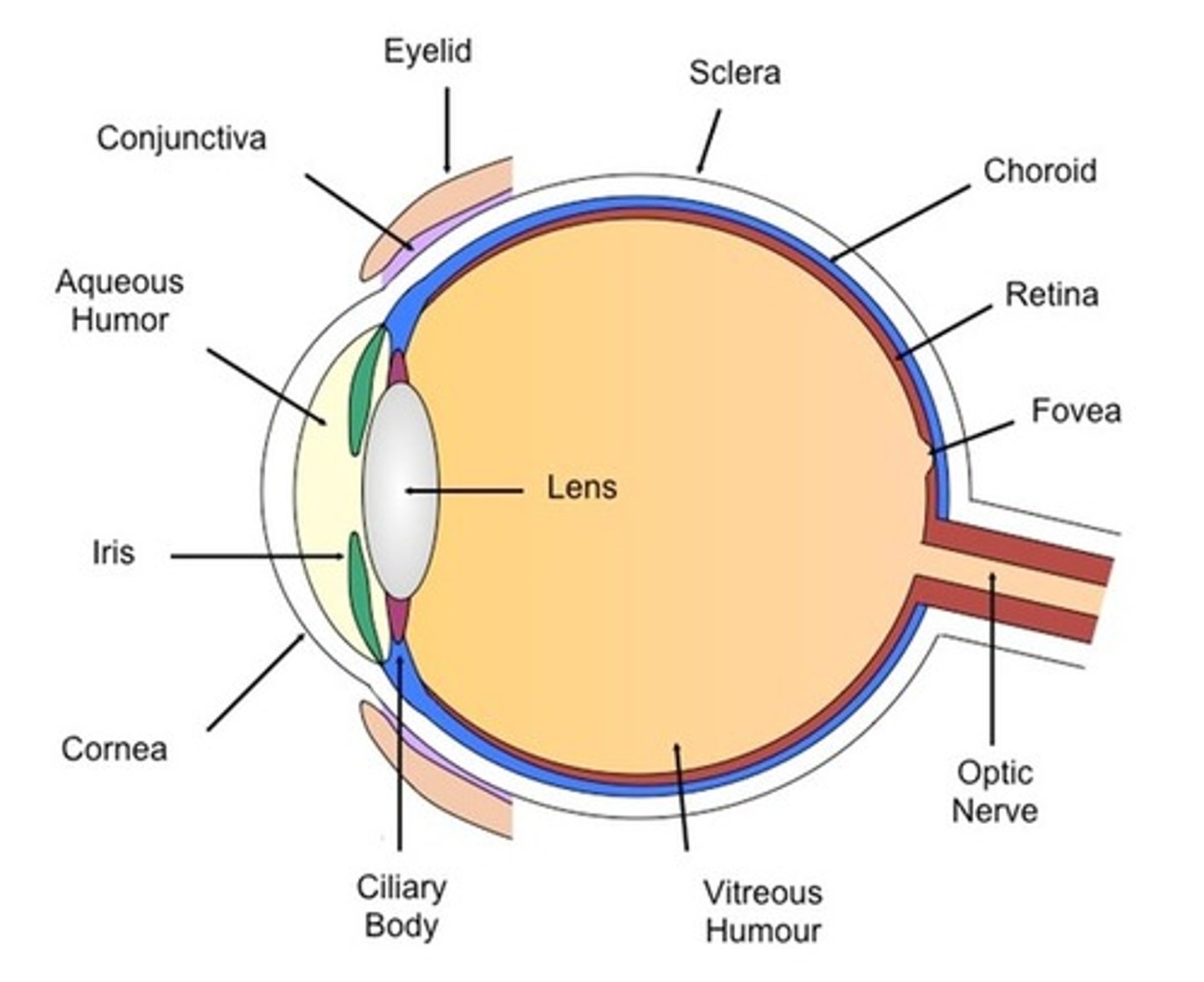
cornea
the transparent layer forming the front of the eye, light waves enter the eye here
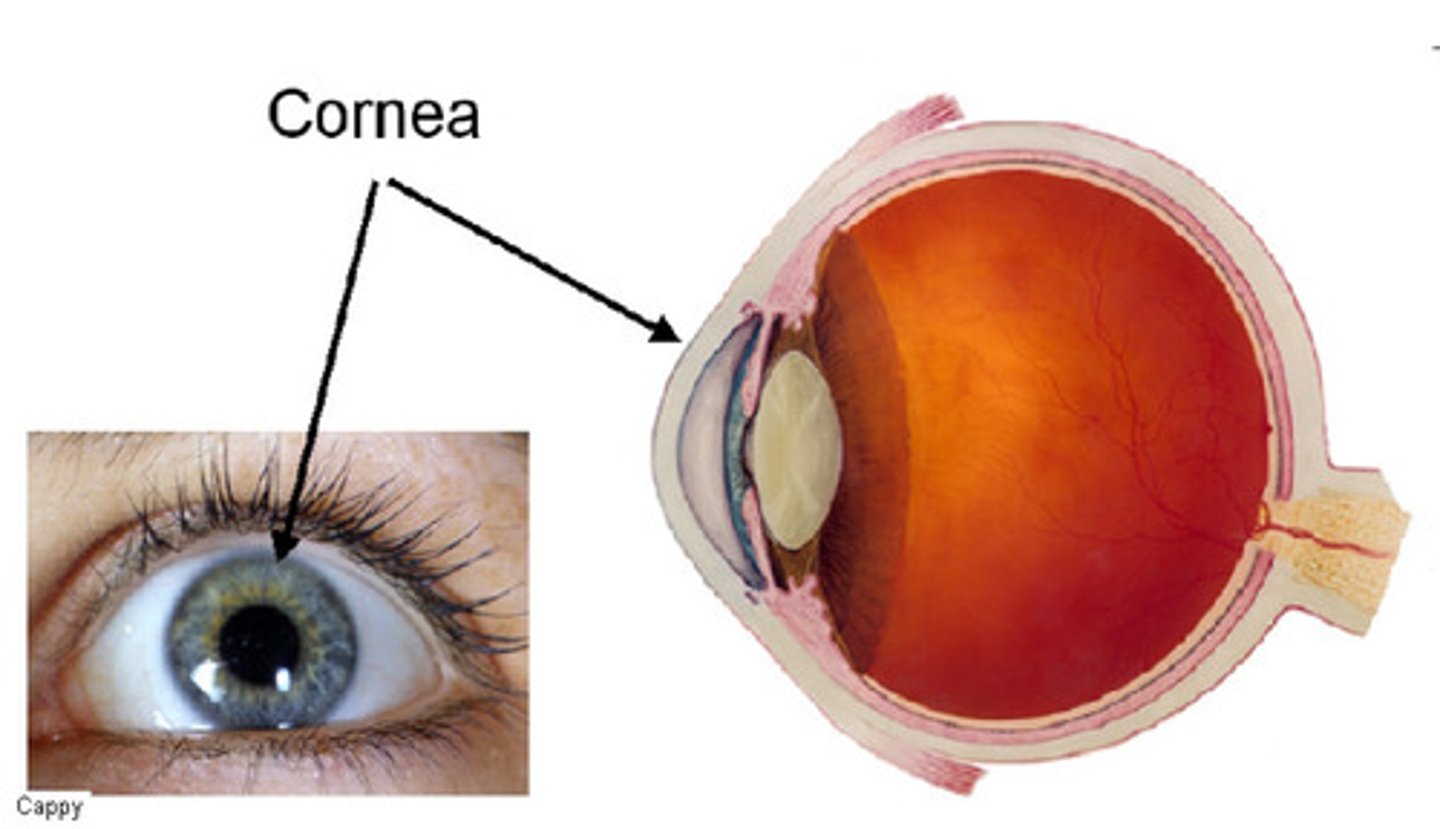
pupil
the adjustable opening in the center of the eye through which light enters, controls the amount of light that is let in
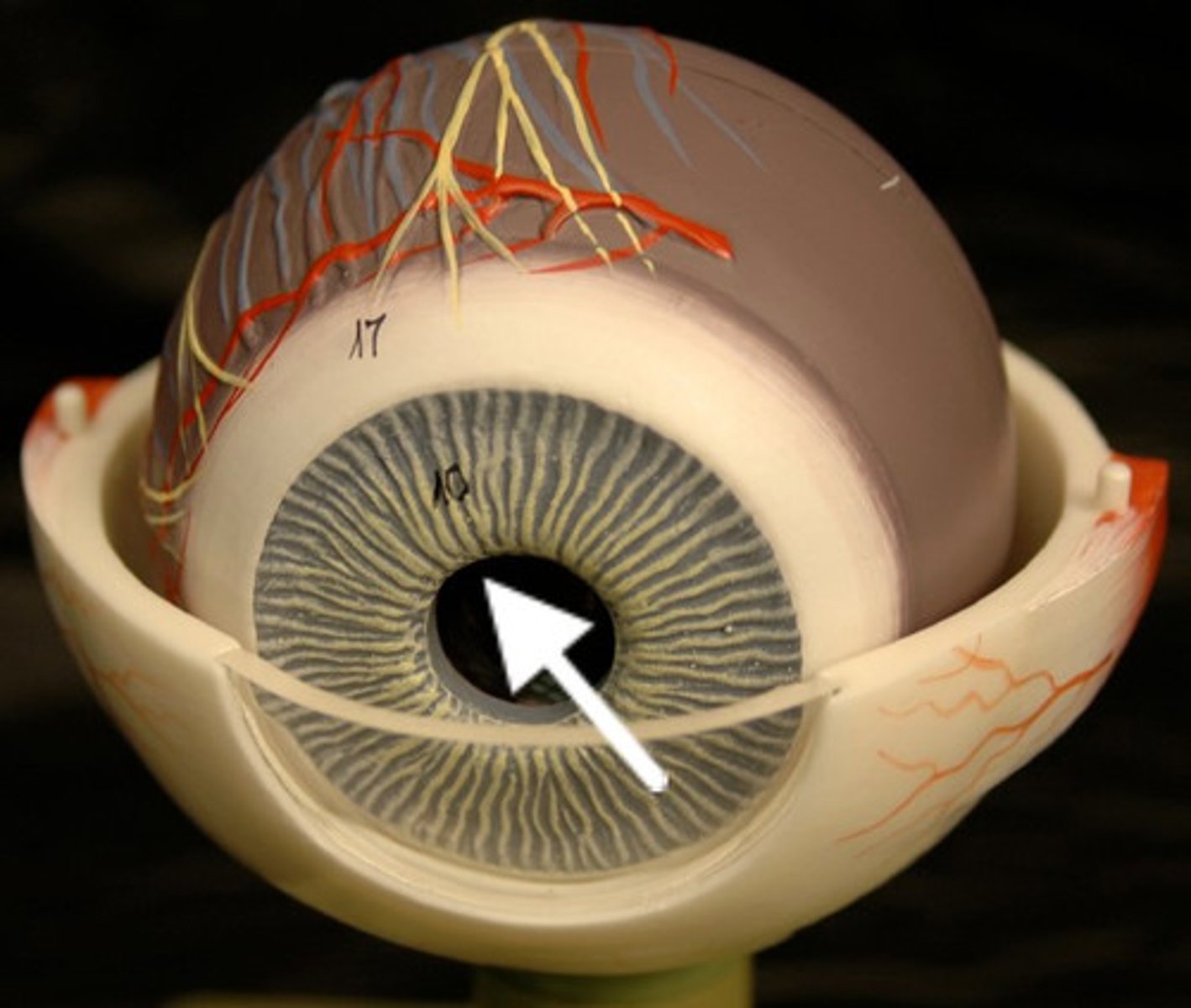
iris
a ring of muscle tissue that forms the colored portion of the eye around the pupil and controls the size of the pupil opening
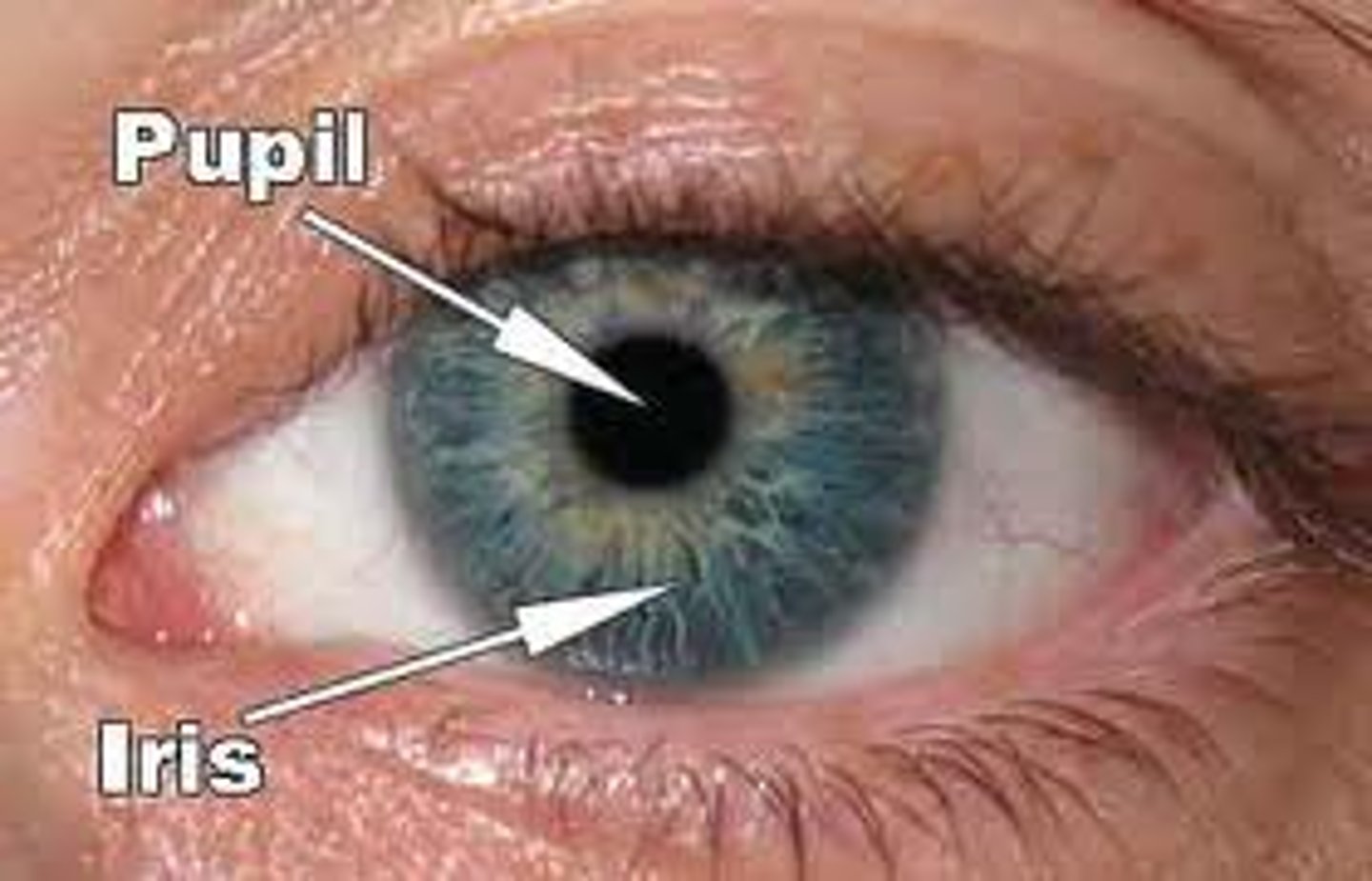
lens/retina
image entering the eye is reversed by the lens and cast on the retina
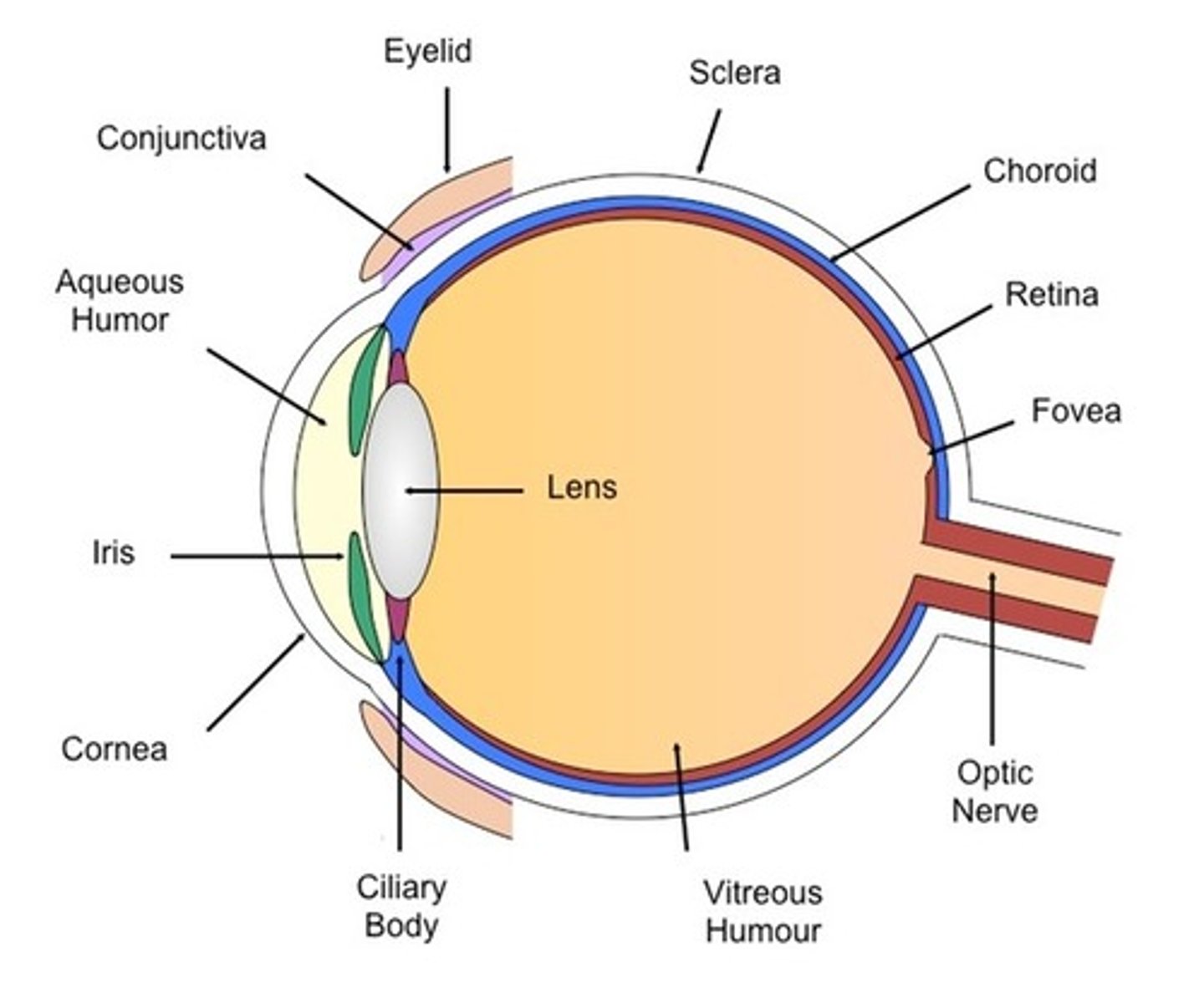
rods and cones location?
the retina
Rods
operate at low light intensities
colorless sensations
capable of detecting very small amounts of light
(periphery of retina)
cones
operate at high light intensities
sensation of color and fine details
(in center of retina)
Cones = Color
fovea
small area in the center of the retina that contains no rods but many densely packed cones- highest visual acuity
layer of eyes order from top to bottom in retina
ganglion cells, bipolar cells, photoreceptor cells (rods and cones)
color vision
Integration of information from red, green, and blue cones
Optic disk and optic nerve
The optic disk, where the optic nerve exits the eye, has no receptors and produces a blind spot
visual pathways to the brain
-From the retina, optic nerve sends messages to the thalamus
-Input is routed to the primary visual cortex in the occipital lobe
-Feature Detectors: cells within the primary visual cortex that fire selectively in response to visual stimuli that have specific characteristics
why do we have two eyes?
-As backup!There are many things we have two of.
-For depth perception (stereoscopic vision). We need to find our prey and manipulate objects.
-For extra acuity
monocular cues to distance
Accommodation• Lens bulges to focus on near objects• Lens flattens to focus on distant objects
Superposition• Nearby object cuts off view of more distant object
Linear perspective • Vanishing point
the ear structure
Pinna (Outer Ear) → Ear Canal → Eardrum (Tympanic Membrane) → Hammer (Malleus) → Anvil (Incus) → Stirrup (Stapes) → Oval Window → Cochlea
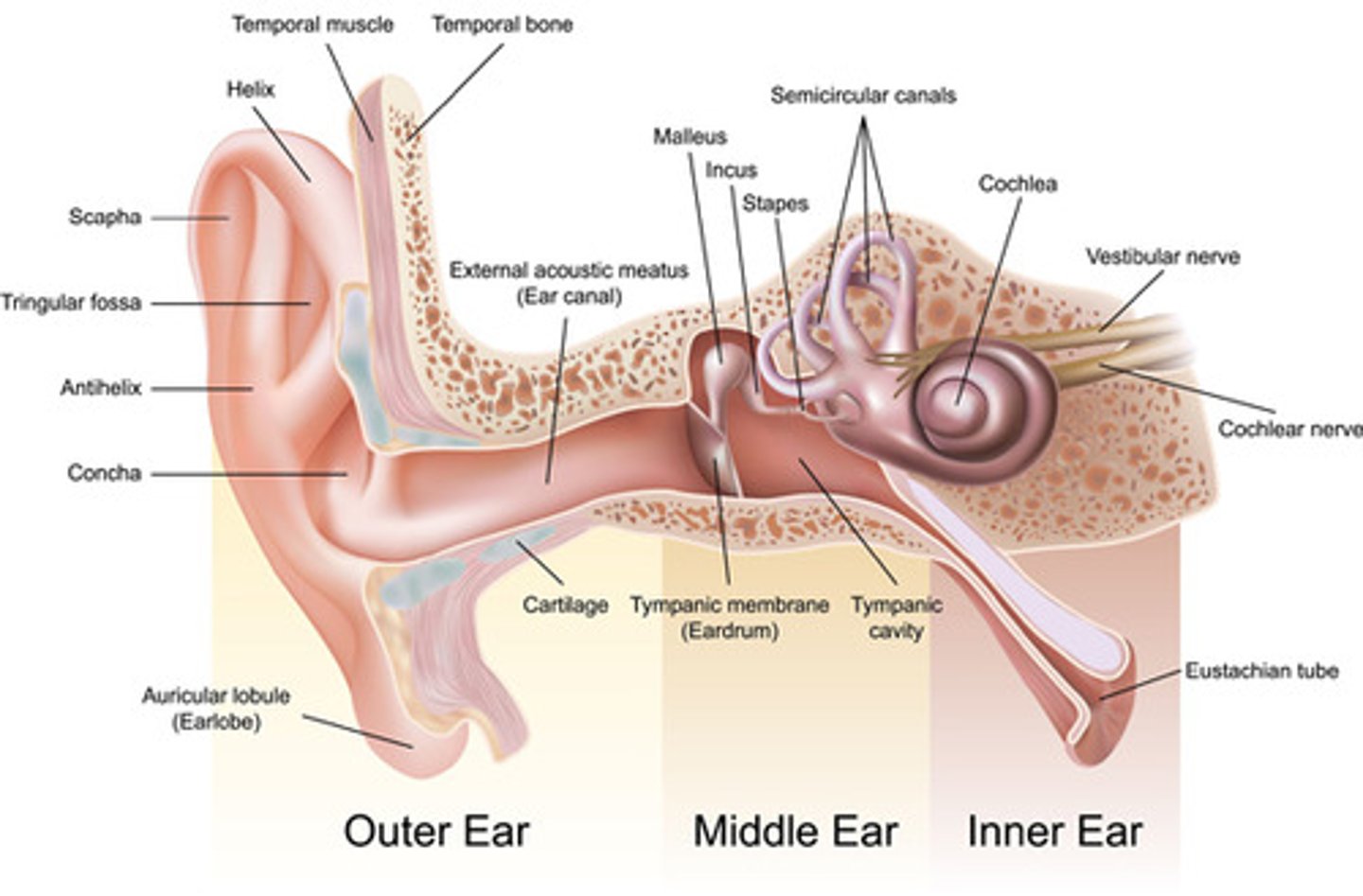
eardrum
Sound waves travel (via auditory canal) to the eardrum, a membrane that vibrates in response to sound waves
middle ear
Middle ear houses 3 bones (ossicles)Vibrating activity of these bones amplifies sound waves
oval window/ inner ear
Stirrup attached to the oval window, the boundary between middle and inner ear
cochlea
Inner ear contains the cochlea, a snail-shaped, fluid-filled tubeFluid waves stimulate hair cells, resulting impulses reach the brain via the
pitch vs loudness
pitch is frequency, loudness is amplitude
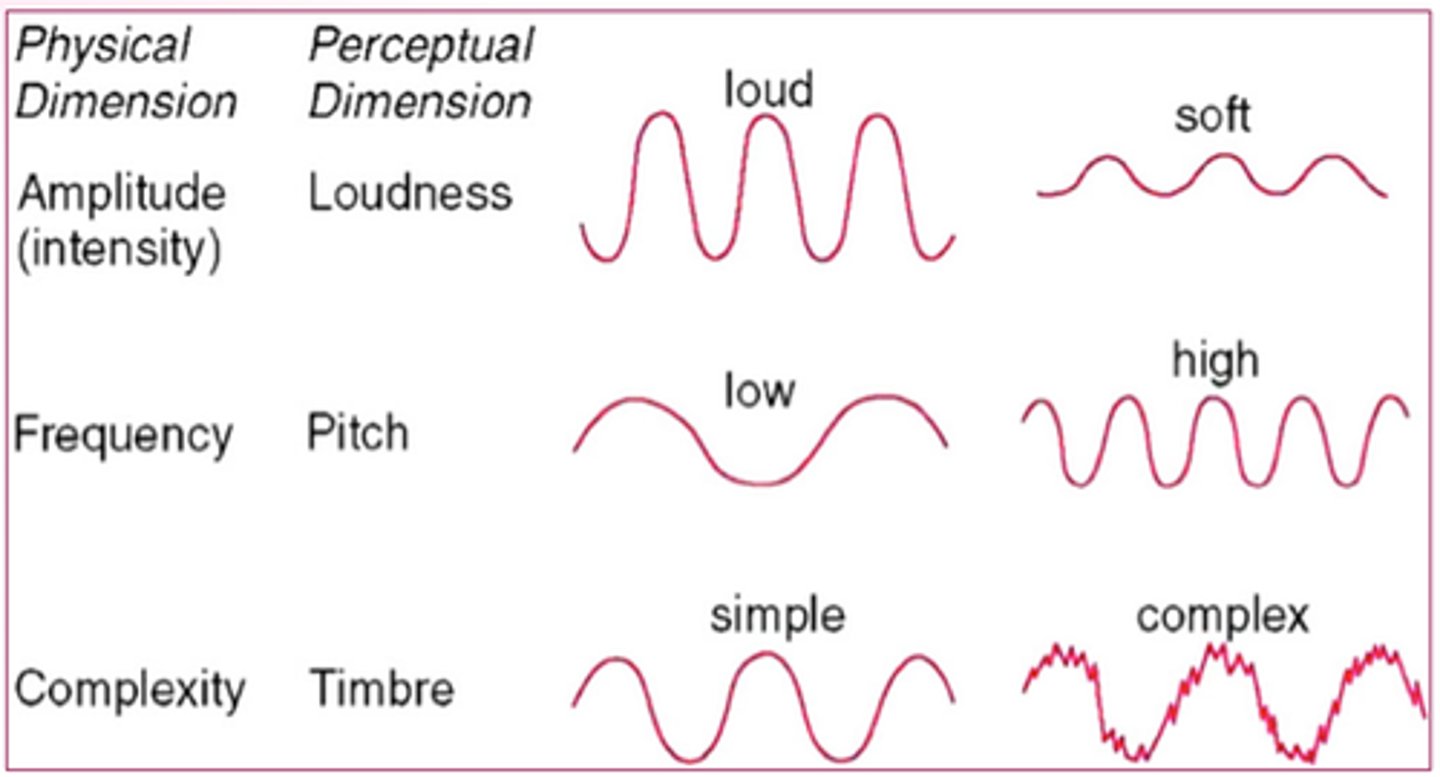
auditory pathway to brain
From the cochlea, auditory nerve sends messages to the thalamus
• Input routed to the primary auditory cortex in the temporal lobe
• Auditory association cortex combines and interprets information
sound localization
Nervous system uses time and intensity differences of sounds arriving at the two ears to locate sounds.
chemical sense-gustation
gustation: the sense of taste
Taste Buds: chemical receptors concentrated along the tip,
edges, and back surface of the tongue
Responds: sweet, sour, salty, bitter, umami
• Umami: taste sensation that increases intensity of other taste qualities
Chemical Sense: Olfaction
Olfaction: the sense of smell• Olfactory receptors send input to the olfactory bulb
• Olfactory bulb is part of the forebrain
taste and olfaction in the brain
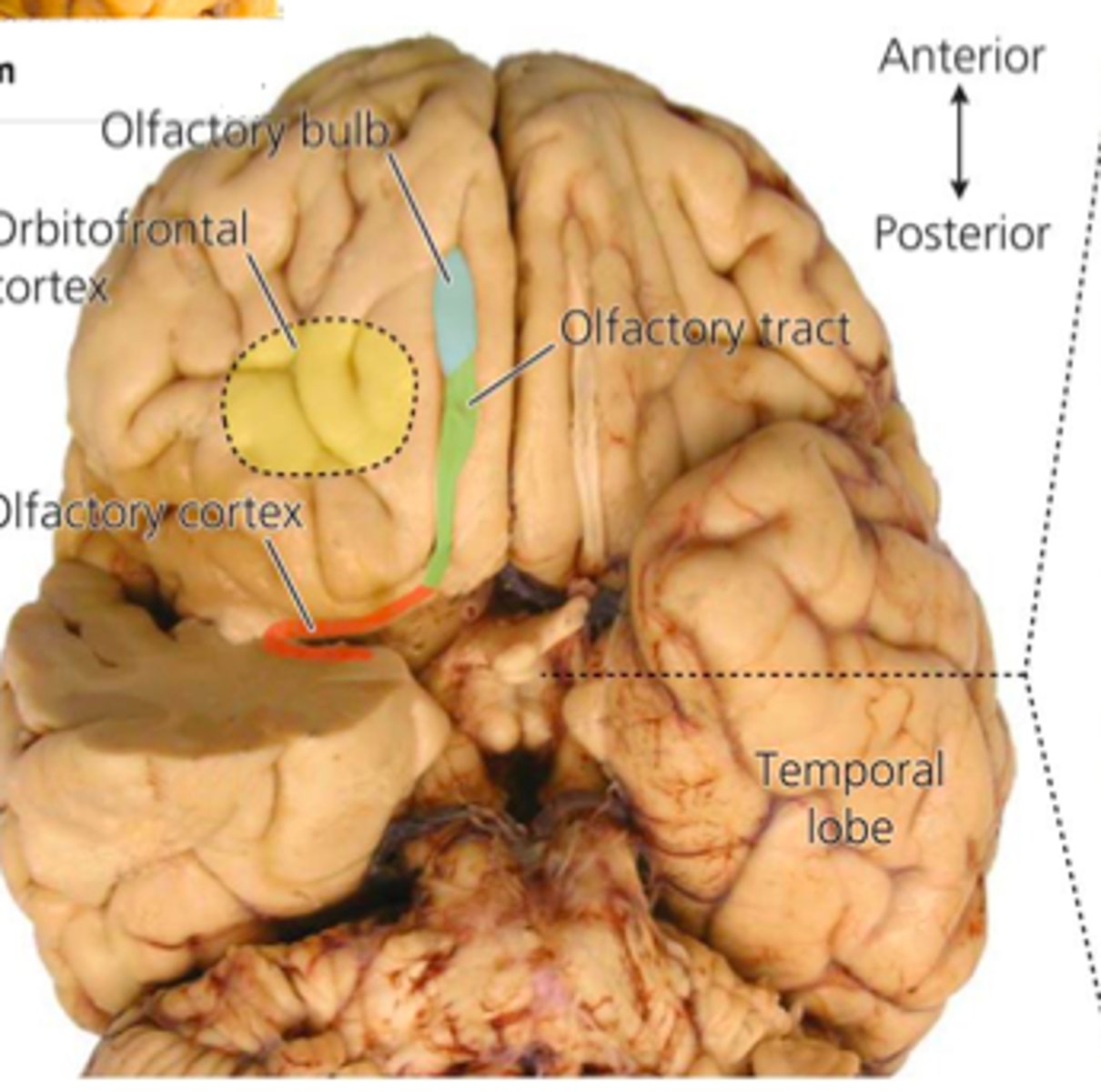
what is the importance of humans being multiple tacticale sensations?
Humans are sensitive multiple tactile sensations
Pressure (touch), pain, warmth, cold
Conveyed by receptors in the skin and internal
organs
Importance of skin and body senses:
Allows us to escape external danger
Alerts us to disorders within our body
Source of pleasure
the skin structure
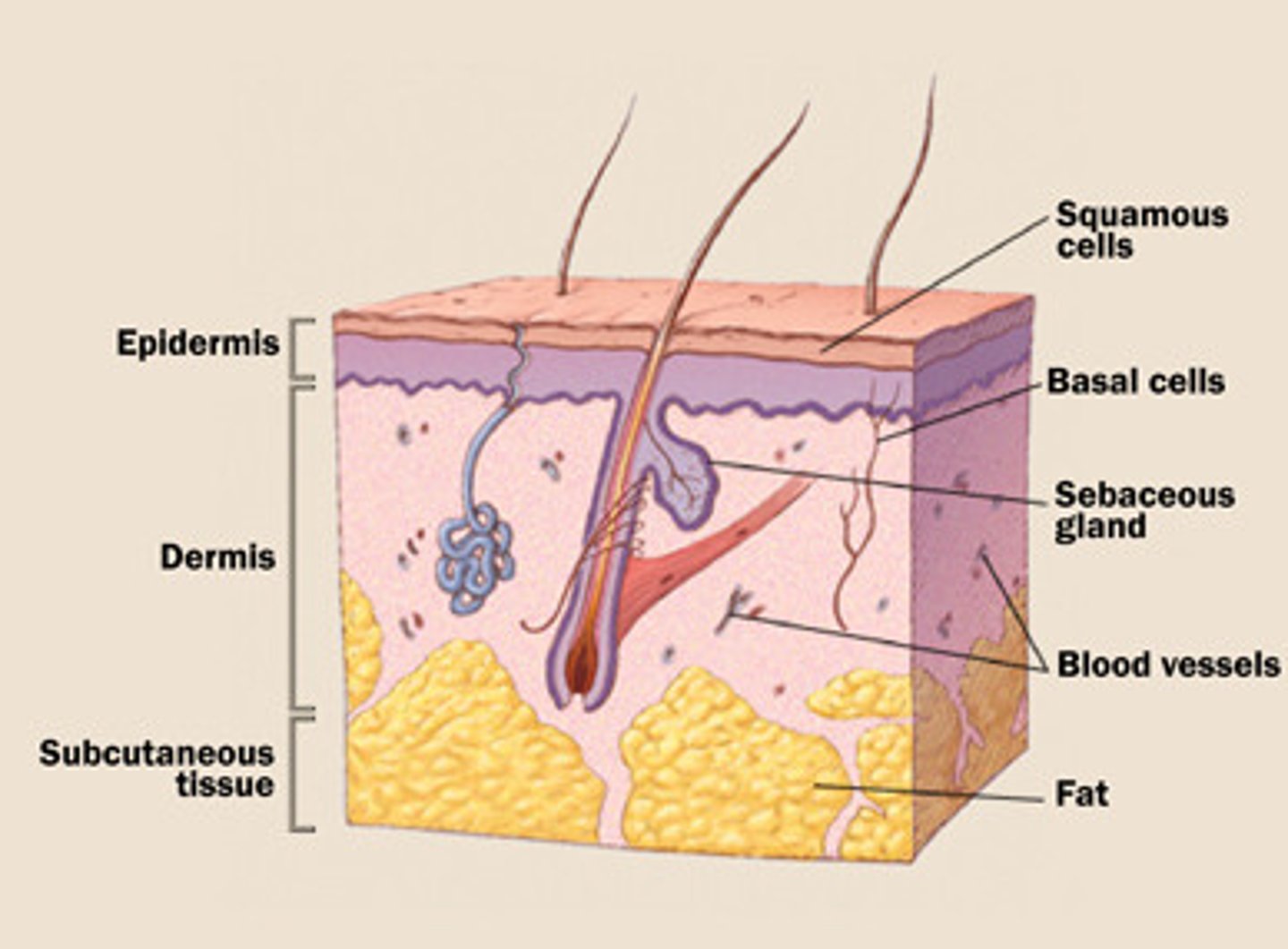
Proprioception:
Proprioception:
the sense that provides us with feedback about the
position and movement of our muscles and joints
Nerve endings in the muscles, tendons, and joints
Vestibular Sense
balance, the sense of body orientation, or equilibrium
Receptors are located in the inner ear
agnosia
damage to the temporal lobe: Loss of ability to recognize objects, sounds, shapes, or smells while the specific sense is not defective nor is there any significant memory loss
Prosopagnosia
damage to the temporal lobe: Damage to Fusiform gyrusLoss of ability to recognize faces
Synaesthesia
Multi-modal perception
Synaesthesia: 'Mixing of the senses'
Experiencing sounds as colours or tastes as touch sensations of
different shapes
Up to 4% of people may have some experience
Days of the week have different colours
Music has a physical texture
phantom limb
Amputees experience vivid sensations coming from the missing limb
Irritation of nerves that used to originate in the limb fools the brain
Phantom pain tends to disappear when prosthetic limbs are fitted
why is sensation not the same as perception
Perception is an active, creative process in which raw sensations are organized and given meaning
Unconscious inferences (going beyond the information given)
Knowledge, expectations, and beliefs (prejudice)
Bottom-up processing • Stimulus/data-driven
Feature detection
Combining of elements
Top-down processing • Experience-driven
Expectations, motivations, concepts, ideas
Can impact bottom-up
gestalt principles proximity
the tendency to perceive objects that are close to each other as part of the same grouping
gestalt principles similarity
the tendency to perceive things that look similar to each other as being part of the same group
gestalt principles good continuation
elements that follow the same pathway are grouped; we perceive continuous patterns, not abrupt changes (e.g., a wave and tooth shapes vs mixed shapes)
gestalt principles auditory
a theory of how different attributes of the soundscape are extracted then bound together into separate groups that reflect different objects or streams present in the scene
perceptual illusions
compelling but incorrect perceptions• Most can be attributed to prior knowledge of the world such as
perceptual constancies that ordinarily help us perceive more accurately
Light constancy
Shape constancy
Size constancy
multisensory perception: mcgurk effect
The McGurk effect occurs when an audible speech syllable is presented in synchrony with a visible face articulating a different speech syllable. The resulting perception is of a single "heard" syllable that has been visually influenced in some way (
absolute threshold
the lowest intensity at which a stimulus can be detected 50 per cent of the time *the lower the threshold- the more sensitive the perceiver is
there is no fixed absolute threshold, it is an intensity scale and people set their own decision criterion within a certain range: it is a standard of how certain an individual must be that a stimulus is present before they will say they can detect it, can change from time to time depending on factors such as fatigue, expectation (watching a horror movie beforehand)
difference threshold
difference threshold: defined as the smallest difference between two stimuli that people can perceive 50 per cent of the time (also called just noticeable difference)
webers law
webers law: states that difference threshold is directly proportional to the magnitude of the stimulus with which the comparison is being made, the greater the intensity of the stimulus, the bigger the difference needs to be in order for a person to detect the difference
-webers law and the logarithmic relationship between physical and perceived intensity means that the human sensory systems can respond to variations in stimuli across huge ranges of variation
sensory adaptation
the diminishing sensitivity to an unchanging stimulus (ex: a sound in a room that you eventually stop noticing like a fan)
the different skin receptor types
Skin Receptors:Mechanoreceptors: Detect pressure, vibration, and texture.Thermoreceptors: Detect changes in temperature (heat and cold).Nociceptors: Detect pain signals from potential harm or tissue damage.
gestalt principles closure
Closure: The brain fills in gaps to create a complete, whole object.
Figure-Ground:
Figure-Ground: The ability to distinguish a figure (object) from its background (ground).
Binocular Cues-depth perception
Binocular Cues:Depth cues that depend on the use of both eyes.Retinal Disparity: The slight difference in images between the two eyes that the brain uses to gauge depth.Convergence: The inward movement of the eyes when focusing on a nearby object, providing a cue to distance.
Monocular Cues- depth perception
Monocular Cues:Depth cues available to each eye individually.Relative Size: Objects that are farther away appear smaller.Interposition: If one object blocks another, it is perceived as closer.Linear Perspective: Parallel lines appear to converge with distance, indicating depth.
Cocktail party effect
: Describes an individual's ability to attend to only one voice even with extensive and varied background noise.
Is sensation bottom-up or top-down? and why?
is a bodily process, it is the physical stimuli, nerve impulses to the brain (sensory transduction).
- Bottom-up: The system takes in individual elements of the stimulus and then combines them into a unified perception.
is perception bottom-up or top-down? and why?
Perception is 'making sense' of those sensations/stimuli. It is an active process that interprets sensation, and it can be heavily influenced by expectations and context.
- Top-down: sensory information is interpreted in light of existing knowledge,
concepts, ideas, and expectations. Your brain applies what it knows to fill in the blanks and anticipate what's next. This is experience, expectations and motivations driven.
how does sensation lead to perception?
Sensation →
- Stimulus received by sensory receptors
- Receptors translate stimulus properties into nerve impulses (transduction)
- Feature detectors analyse stimulus features
- Stimulus features are reconstructed into neural representation
- Neural representation is compared with previously stored information in
brain
- Matching process results in recognition and interpretation of stimulus
→ Perception
what are feature detectors?
What is caught on your retina, is transported to the thalamus and then to the primary visual cortex. Feature detectors are cells in the primary visual cortex that respond to stimuli with certain characteristics, and then the stimulus elements are reconstructed and interpreted in light of input from the visual association cortex.
bonocular vs monopular disparity?
Binocular disparity makes sure you can see depth with two eyes. Monocular cues of distance are accommodation, superposition and linear perspective.
conduction deafness
Hearing loss may result from conduction deafness, produced by problems
involving the structures of the ear that transmit vibrations to the cochlea
nerve deafness
nerve deafness, in which the receptors in the cochlea or the auditory nerve are damaged.
what two senses work with chemical receptors?
Taste (gustation) and smell (olfactory) work with chemical receptors. Taste buds and olfactory receptors send impulses, the latter to the olfactory bulb.
non- associative learning
Non-associative learning is through one stimulus, where either habituation (decrease in the strength of a response to a repeated stimulus, simplest form of learning) or sensitisation occurs.
how are escape and avoidance conditioning related?
Escape conditioning and avoidance conditioning result from negative reinforcement. According to the two-factor theory, fear is created through classical conditioning. This fear motivates escape and avoidance, which are then negatively reinforced by fear reduction.
priming
a type of unconscious processing is the subtle presentation of information under the threshold of consciousness